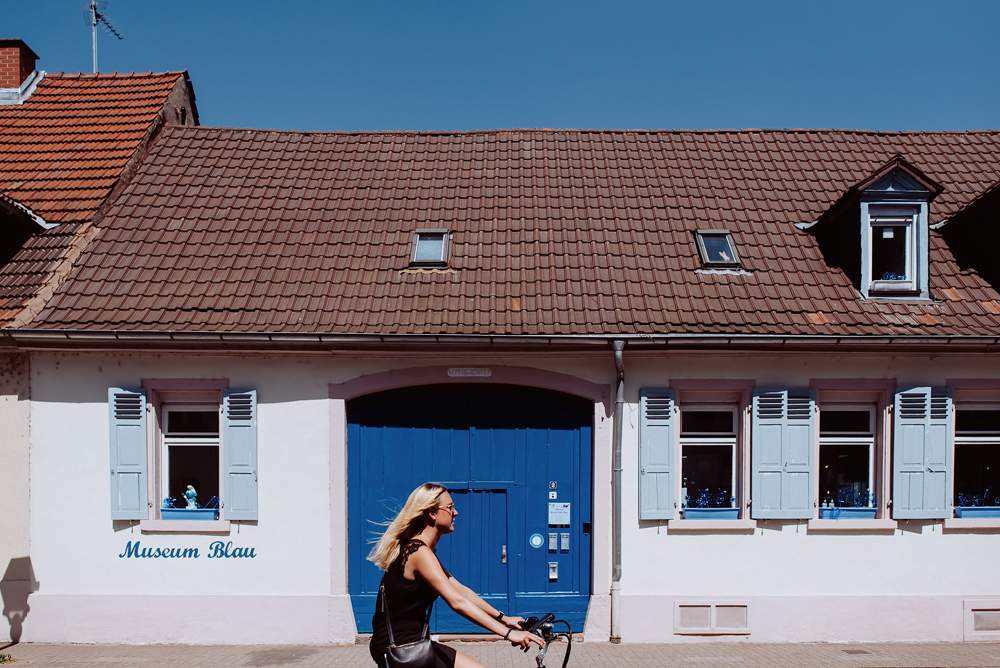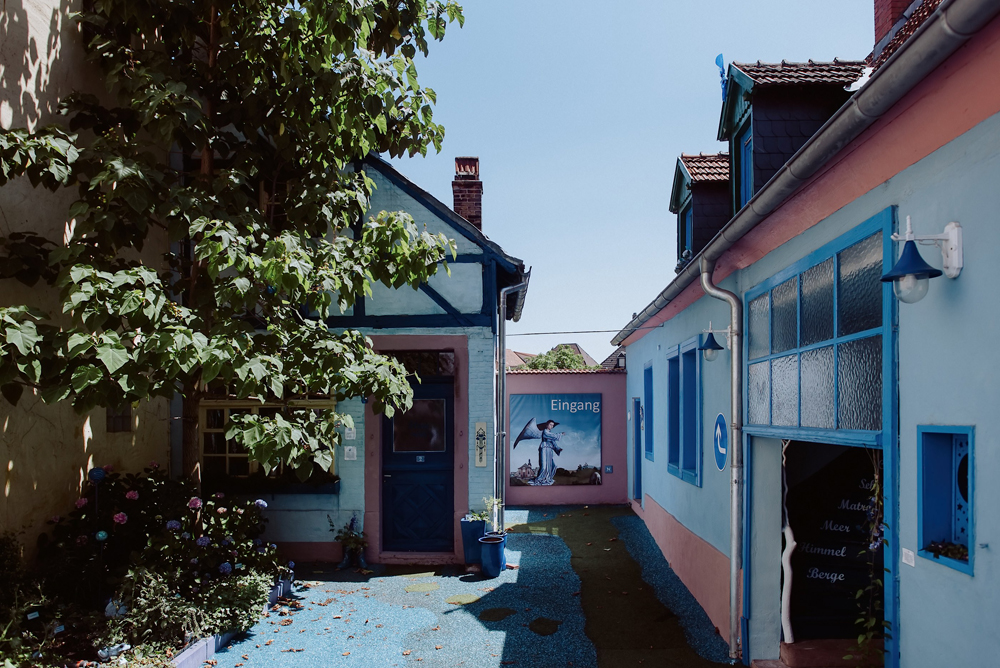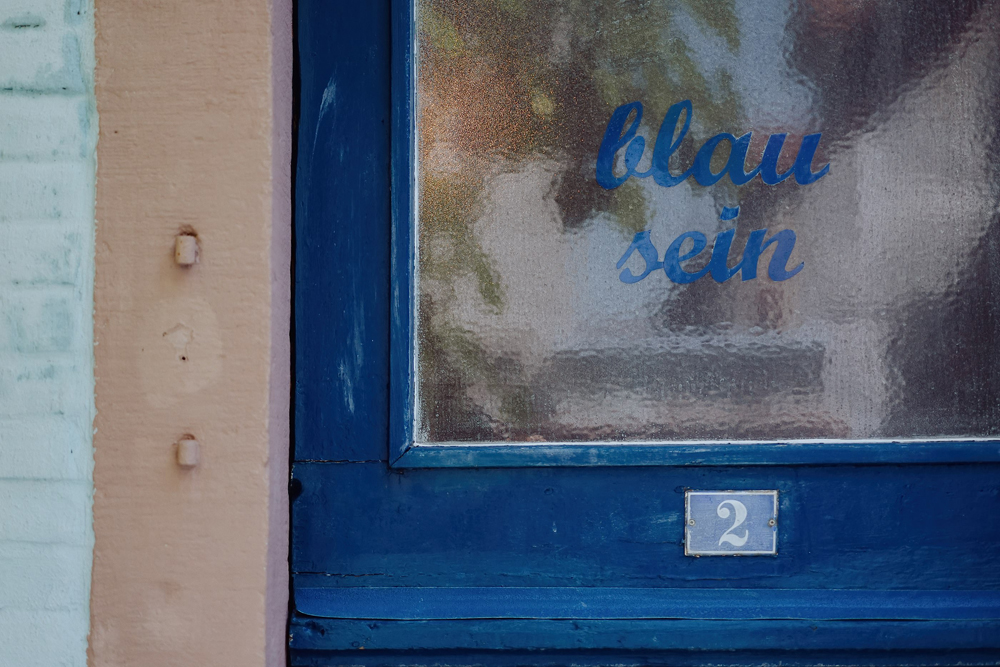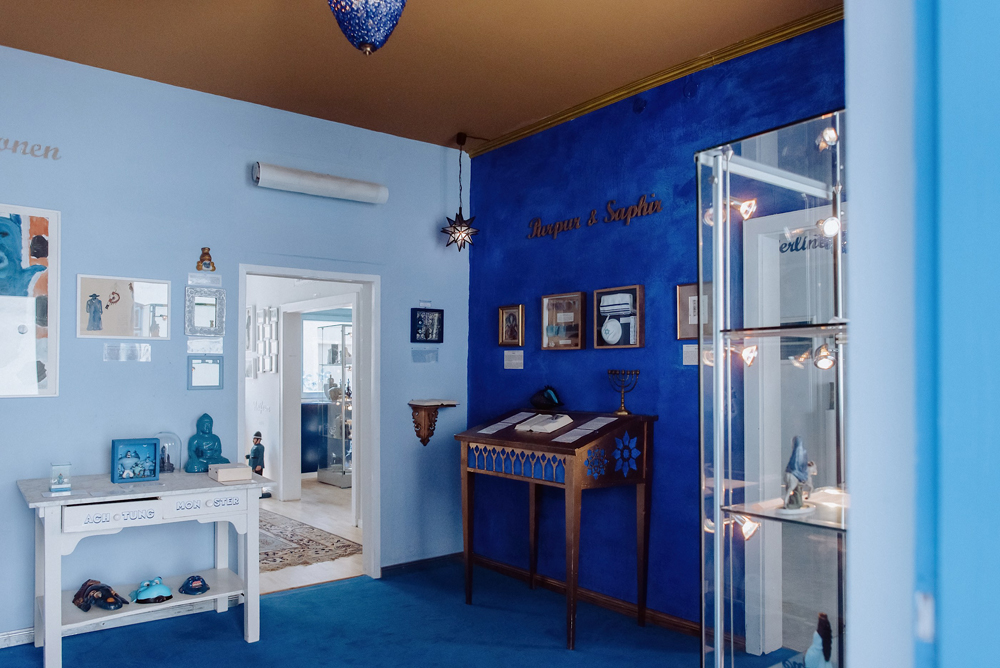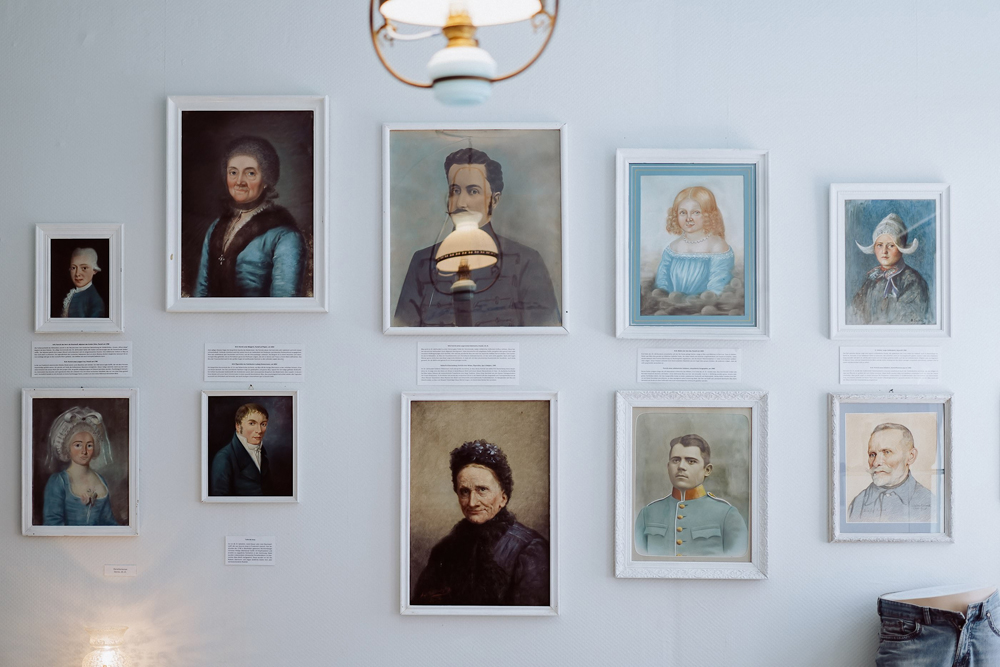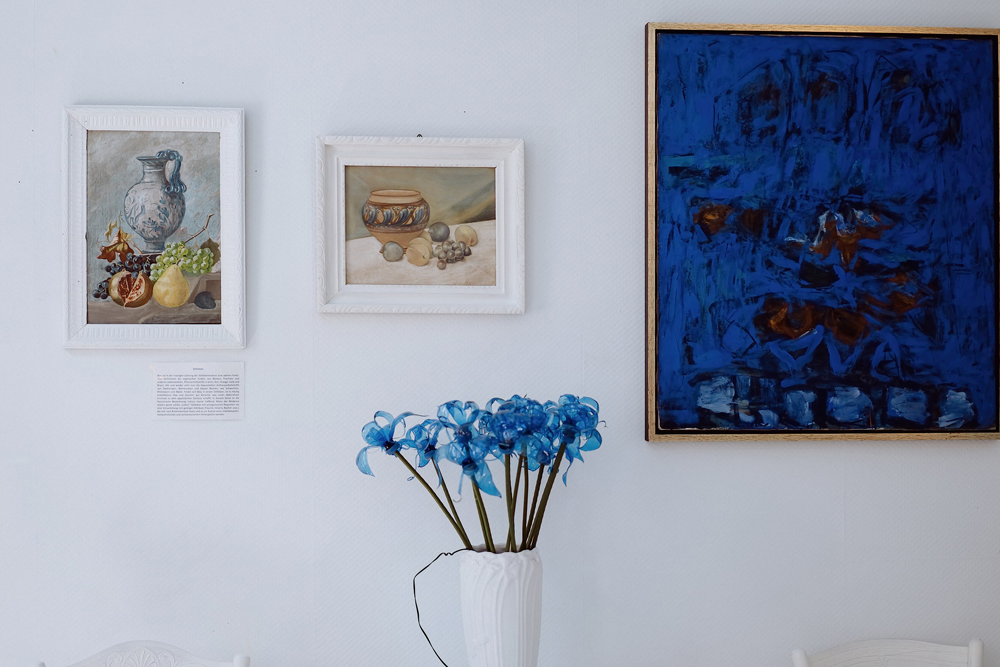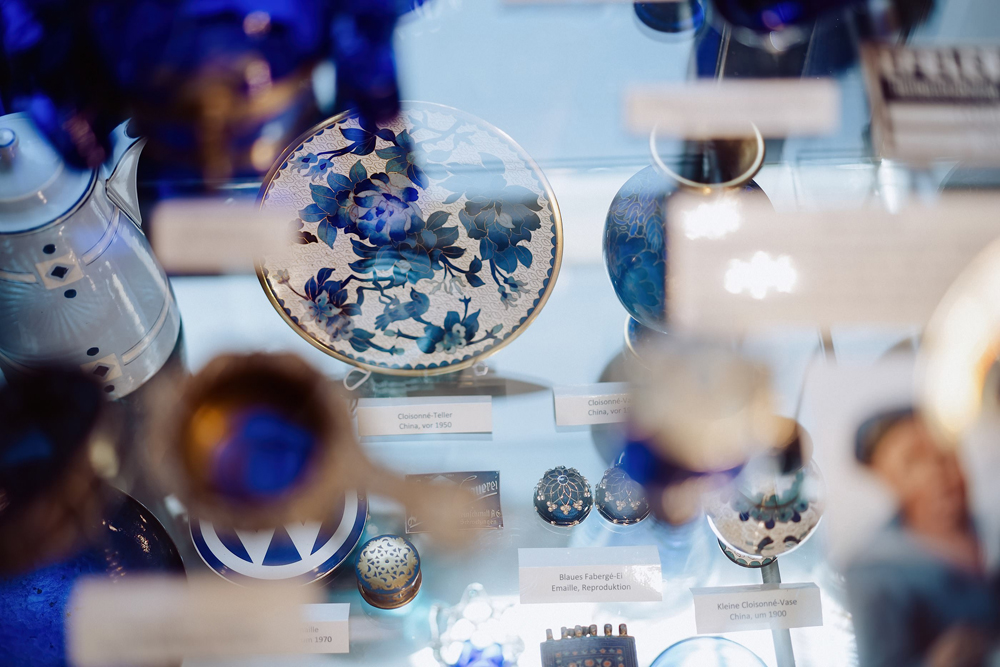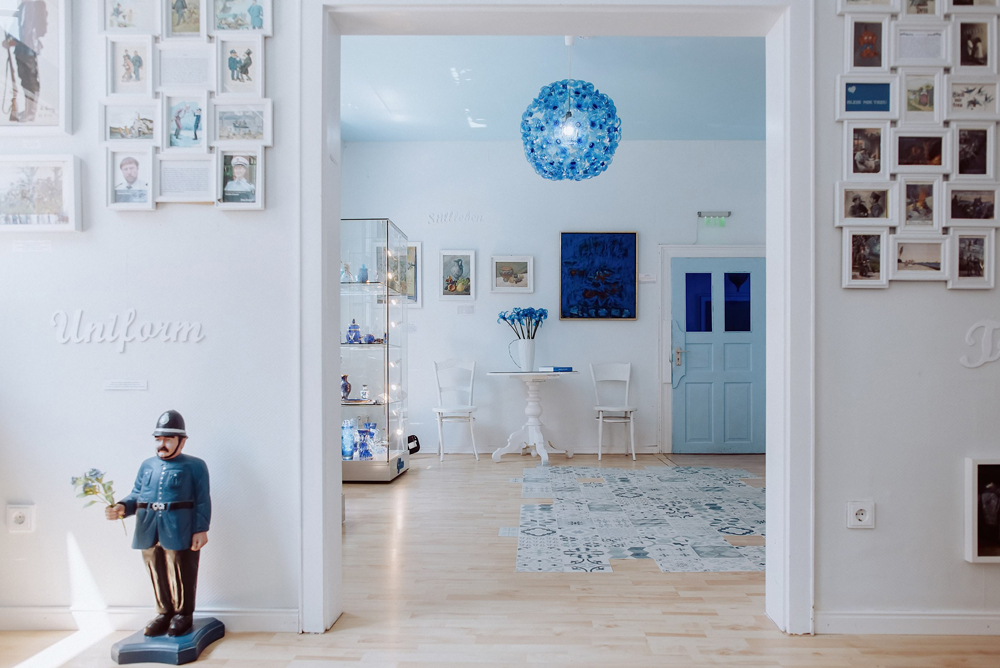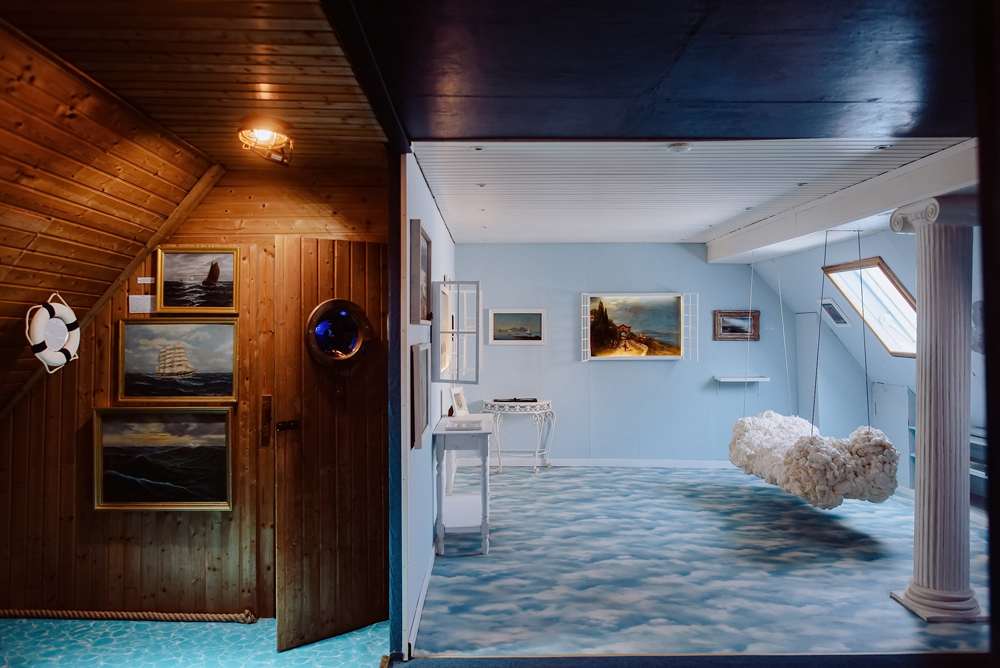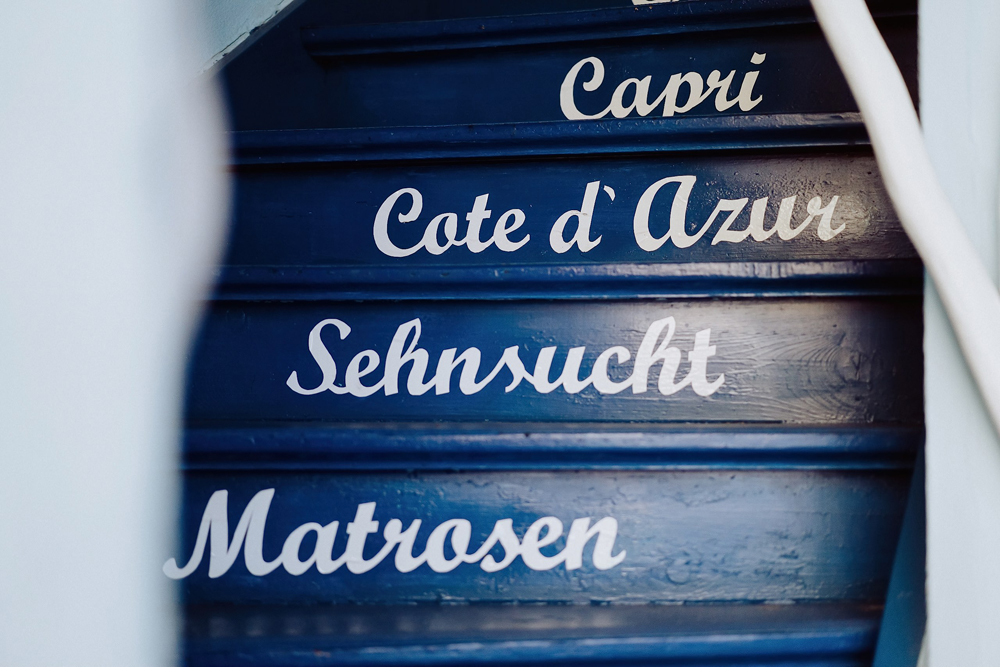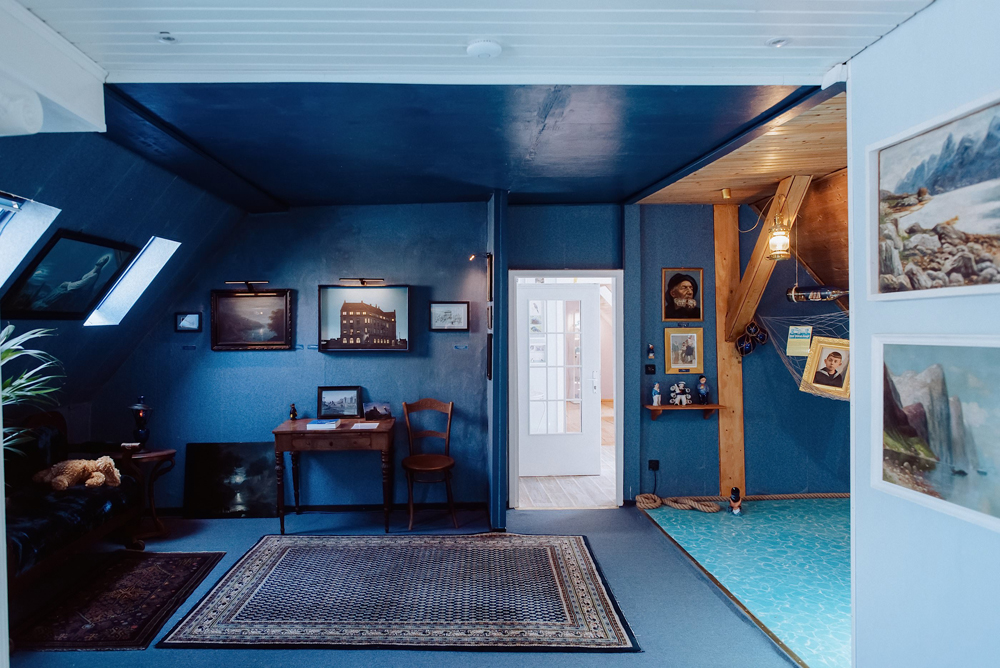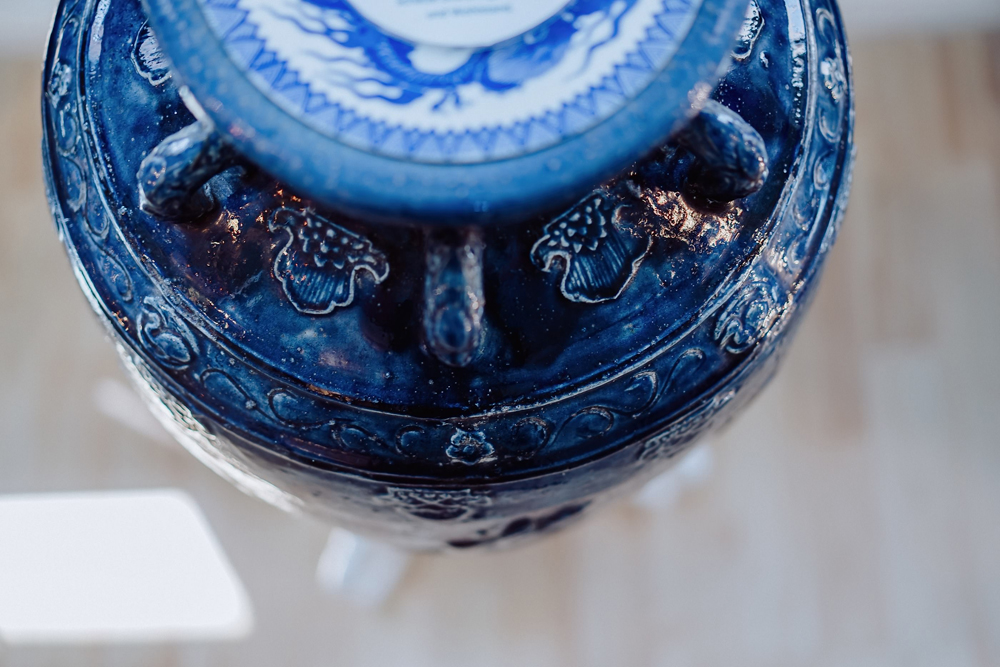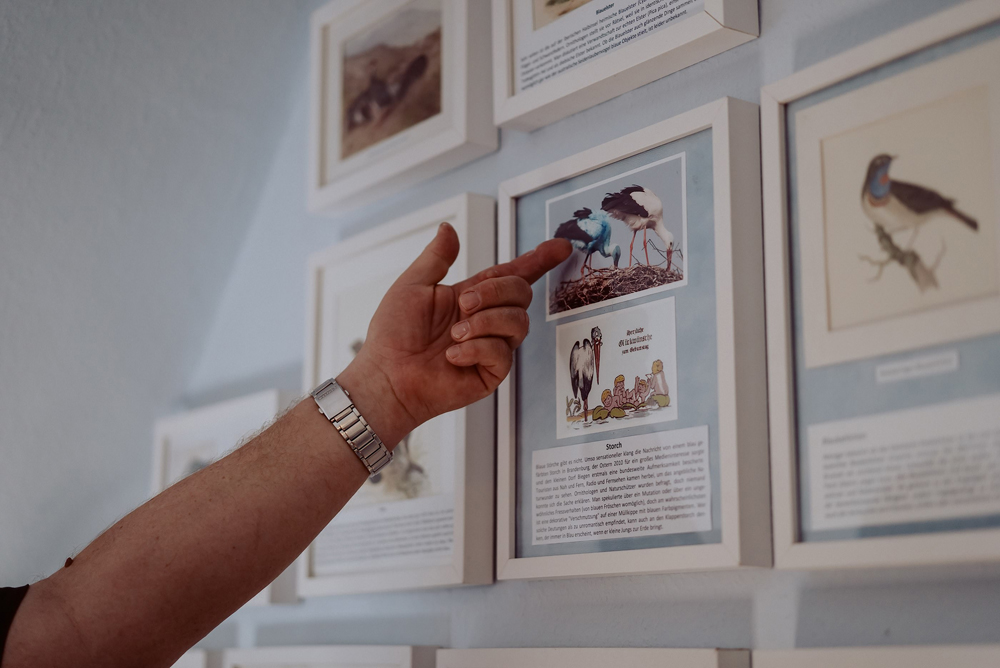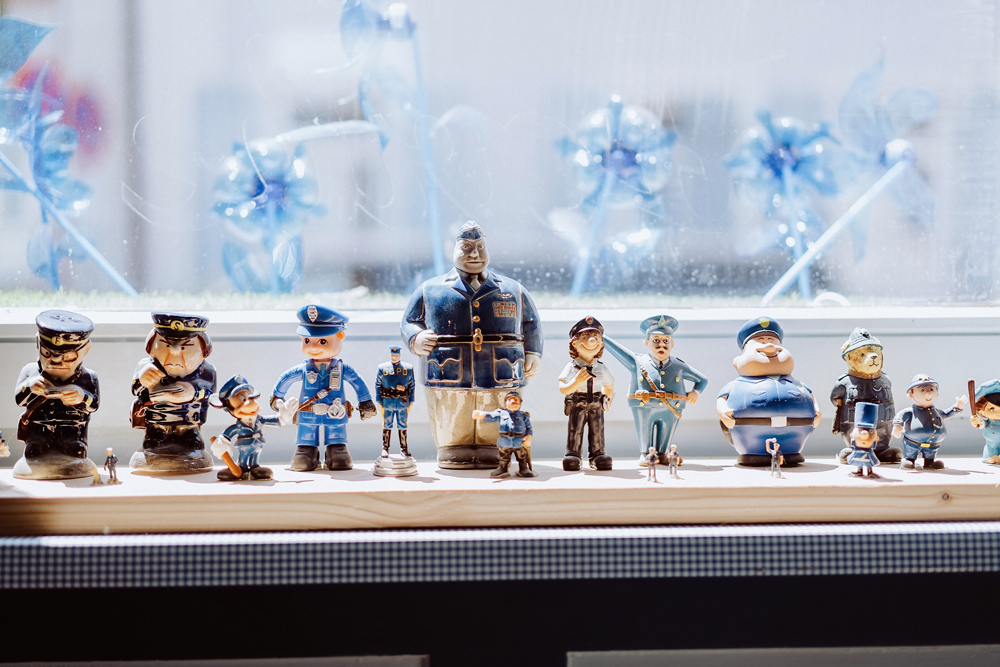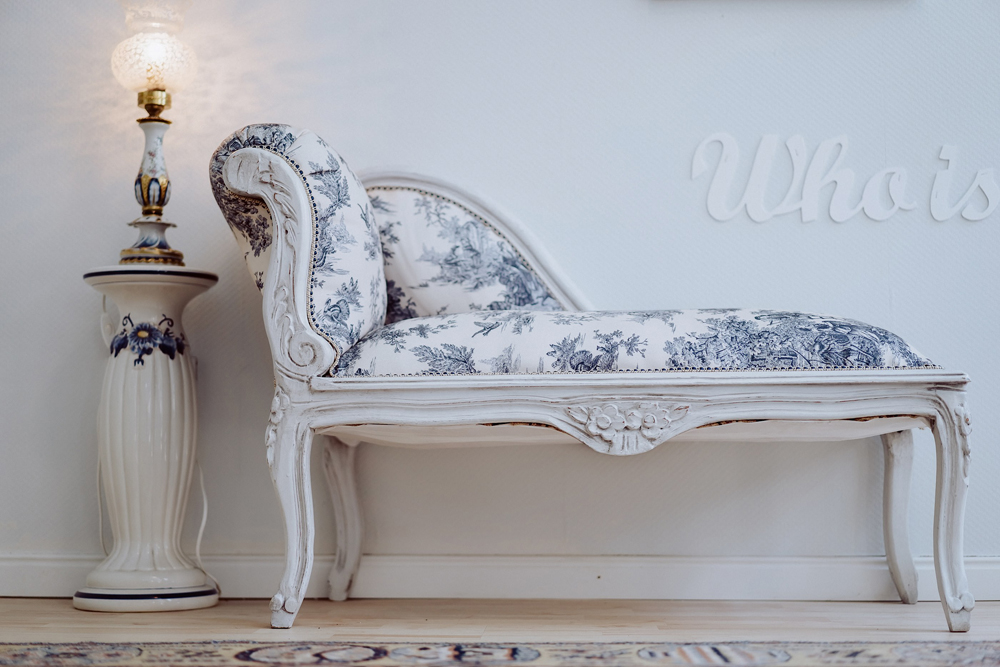Dietmar Schuth wrote his doctorate as well as an encyclopaedia about the colour blue and lives out a dream with a private museum in Schwetzingen, which is dedicated entirely to most people’s favourite colour and fitted out with much handiwork and sense of humour.
Many German sayings contain the colour ‘blue’: to be blue (to be drunk as a lord), to make blue (to take a day off), to promise the blue of the sky (to promise heaven and earth), to drive into the blue, to experience a blue miracle (a nasty surprise) or blue hours, to watch with admiration the Blue Rider or blue flower. Why? Why are we so fascinated by this colour, which most people in the world have as their favourite colour? Let alone the fact that there hadn’t been a term to name it for along time in many languages, or that it used to be so expensive that artists usually had to beg their clients for a ‘blue budget’?
Dietmar Schuth knows the answers. He researched and wrote his doctorate about them, wrote them down on 500 pages in an encyclopaedia and finally established them in an old half-timbered Biedermeier house in the town of Schwetzingen, with azure-blue window shutters and an ultramarine-coloured wooden gate. As this gate slam shuts, visitors dive into an ocean of blue. Walls, doors, the reception desk, hortensias in the court, the steps on the upper floor, even the hose, the watering can and the bucket—everything is blue. But the eye can’t get enough of it. Dietmar tracks the visitors’ eyes, smiles and admits: “Surely I wouldn’t have done this in red.”
The story began in 1990 with the exhibition “Blue—the colour of faraway” in the Heidelberg art club. Dietmar had just completed his Master’s in art history and started working with director Hans Gercke. The exhibition attracted over 120,000 visitors—an “incredible amount,” Dietmar recalls the scene. Like them, he was fascinated by the matter. Not so much by the colour itself, which he merely finds “appealing,” but really by the stories behind the colour, its production and its use. “I wanted to systemize it, realizing that nobody had done that yet.” Maybe because scientists would have to leave their field of knowledge very quickly, suspects the art historian. Which is exactly what attracted him to the task. Henceforth he busied himself in psychology and biology, in optics and linguistics, in chemical and physiological processes. Blue turned him into an expert in many fields as well as into a craftsman, explorer and product developer—for the bath water colour called “Tinti” for example, with which children can produce colourful bubble mountains in their tubs at home.
